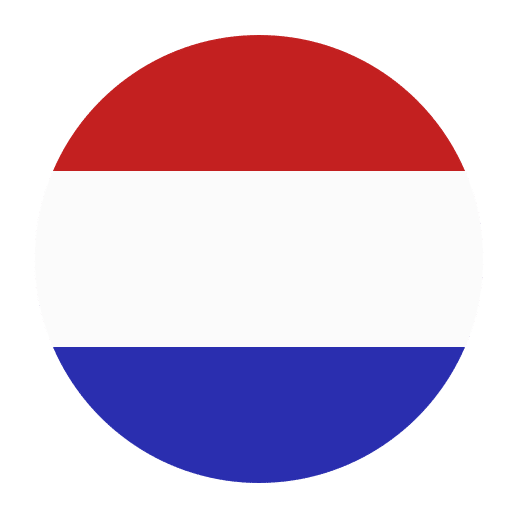Learning a new language can be a rewarding yet challenging endeavor, and Dutch is no exception. With its unique phonetics, grammar, and vocabulary, the Dutch language can present a steep learning curve for English speakers. However, the advent of language learning software has revolutionized the way we approach new languages. These tools offer structured learning paths, interactive exercises, and instant feedback, making the learning process more engaging and efficient. In this article, we’ll explore how to use Dutch language learning software effectively to maximize your fluency and comprehension in Dutch.
Understanding the Basics of Dutch Language Learning Software
Before diving into the strategies for using Dutch language learning software, it’s essential to understand the various features and functionalities these programs offer. Most language learning software, whether it’s Duolingo, Babbel, Rosetta Stone, or another platform, includes the following components:
Interactive Lessons
These lessons are typically designed to teach vocabulary, grammar, and sentence structure through interactive exercises, including matching words to images, fill-in-the-blank activities, and multiple-choice questions.
Speech Recognition
Many programs incorporate speech recognition technology to help learners practice their pronunciation. This feature allows you to compare your speech with native speakers and receive feedback on accuracy.
Listening Exercises
Listening comprehension exercises are crucial for improving your ability to understand spoken Dutch. These exercises often include dialogues, stories, or instructions read by native speakers.
Writing Practice
Writing exercises help reinforce your understanding of grammar and vocabulary by requiring you to construct sentences, fill in blanks, or translate phrases.
Cultural Insights
Some language learning software includes cultural notes and tips to help you understand the context in which certain phrases or words are used, enhancing your overall learning experience.
Progress Tracking
Most programs offer tools to track your progress, including quizzes, tests, and achievement badges. This feature helps keep you motivated and allows you to monitor your improvement over time.
Setting Realistic Goals
One of the first steps to using Dutch language learning software effectively is setting realistic and achievable goals. Here are some tips to help you set goals that will keep you motivated:
Start Small
Begin with manageable goals, such as learning a certain number of new words each week or completing a specific number of lessons. This will help you build momentum without feeling overwhelmed.
Be Consistent
Consistency is key when learning a new language. Aim to practice a little every day rather than cramming all your study sessions into one day. Daily practice helps reinforce what you’ve learned and aids long-term retention.
Track Your Progress
Use the progress tracking tools provided by the software to monitor your achievements. Celebrate small victories to stay motivated and maintain a positive attitude towards learning.
Set Milestones
Set larger milestones, such as being able to hold a basic conversation or understanding a Dutch news article. These long-term goals will give you something to strive for and a sense of accomplishment when achieved.
Maximizing the Use of Interactive Lessons
Interactive lessons are the backbone of most language learning software. Here are some strategies to make the most out of these lessons:
Engage Actively
Don’t just passively click through the exercises. Engage actively by speaking out loud, repeating phrases, and writing down new words and sentences. Active engagement helps reinforce your learning.
Review Regularly
Regular review is crucial for retention. Many programs offer spaced repetition systems (SRS) that help you review vocabulary and concepts at optimal intervals. Make use of these features to ensure you retain what you’ve learned.
Take Notes
Keep a notebook or digital document where you jot down new vocabulary, grammar rules, and phrases. Reviewing these notes regularly will reinforce your learning and provide a handy reference.
Utilizing Speech Recognition Effectively
Speech recognition technology can be a powerful tool for improving your pronunciation and speaking skills. Here’s how to make the most of it:
Practice Regularly
Use the speech recognition exercises regularly to practice your pronunciation. The more you practice, the more comfortable you’ll become with the sounds and rhythms of the Dutch language.
Listen and Compare
Pay close attention to the native speaker’s pronunciation and try to mimic it as closely as possible. Use the feedback provided by the software to make adjustments and improve your accuracy.
Record Yourself
Some programs allow you to record yourself and compare your pronunciation with that of a native speaker. Take advantage of this feature to identify areas where you need improvement and track your progress over time.
Enhancing Listening Comprehension
Listening comprehension is a critical component of language learning. Here are some tips to improve your listening skills using language learning software:
Listen Actively
When doing listening exercises, focus intently on the audio. Try to catch every word and understand the context. Don’t be afraid to listen multiple times until you grasp the content.
Use Subtitles
If the software offers subtitles or transcripts, use them initially to aid understanding. Gradually wean yourself off the subtitles as your listening skills improve.
Practice with Different Accents
Dutch, like many languages, has regional accents. Expose yourself to different accents and dialects by listening to various speakers within the software. This will improve your overall comprehension and adaptability.
Improving Writing Skills
Writing is an essential skill that reinforces your understanding of grammar and vocabulary. Here’s how to improve your writing skills using language learning software:
Practice Regularly
Make writing practice a regular part of your study routine. Complete all writing exercises provided by the software and try to write short paragraphs or essays on your own.
Focus on Grammar
Pay close attention to grammar rules and structures when writing. Use the feedback provided by the software to correct your mistakes and learn from them.
Expand Your Vocabulary
Incorporate new vocabulary into your writing to reinforce your learning. Try to use newly learned words and phrases in your sentences to make them stick.
Integrating Cultural Insights
Understanding the cultural context of a language is crucial for effective communication. Here’s how to make the most of the cultural insights provided by language learning software:
Read Cultural Notes
Take the time to read and understand the cultural notes provided within the lessons. These notes often explain the context in which certain phrases or words are used, which can enhance your understanding and usage.
Watch Dutch Media
Supplement your learning by watching Dutch TV shows, movies, and news programs. This will expose you to real-life usage of the language and deepen your cultural understanding.
Engage with Dutch Speakers
Try to engage with native Dutch speakers, either online or in person. This will give you practical experience and help you understand cultural nuances and context.
Making Use of Progress Tracking
Progress tracking tools are vital for monitoring your improvement and staying motivated. Here’s how to make the most of these features:
Set Benchmarks
Set benchmarks for yourself, such as completing a certain number of lessons or achieving a specific score on a test. Use these benchmarks to measure your progress and stay motivated.
Review Your Progress
Regularly review your progress to see how far you’ve come. This will give you a sense of accomplishment and motivate you to keep going.
Adjust Your Goals
Based on your progress, adjust your goals as needed. If you’re progressing faster than expected, set more challenging goals. If you’re struggling, adjust your goals to be more manageable.
Supplementing Software with Other Resources
While language learning software is a powerful tool, supplementing it with other resources can enhance your learning experience. Here are some additional resources to consider:
Language Exchange Partners
Find a language exchange partner who is a native Dutch speaker learning English. This will give you practical speaking practice and exposure to real-life conversations.
Books and Articles
Read Dutch books, articles, and blogs to expand your vocabulary and improve your reading comprehension. Start with simple texts and gradually move to more complex materials.
Online Communities
Join online communities and forums where Dutch learners and native speakers interact. Engaging in discussions and asking questions can provide valuable insights and practice.
Flashcards
Use flashcards, either physical or digital, to reinforce vocabulary and grammar. Programs like Anki or Quizlet offer customizable flashcards and spaced repetition systems to aid retention.
Maintaining Motivation
Staying motivated is crucial for long-term language learning success. Here are some tips to maintain your motivation:
Set Personal Goals
Set personal goals that are meaningful to you, such as being able to communicate with Dutch-speaking friends or traveling to the Netherlands. Personal goals provide a strong incentive to keep learning.
Celebrate Achievements
Celebrate your achievements, no matter how small. Recognize your progress and reward yourself for reaching milestones.
Stay Positive
Language learning can be challenging, and it’s normal to encounter difficulties. Stay positive and remind yourself of why you started learning Dutch in the first place.
Join a Community
Join a community of Dutch learners to share your experiences, seek advice, and stay motivated. Being part of a supportive community can make the learning process more enjoyable and rewarding.
Conclusion
Dutch language learning software offers a comprehensive and interactive way to learn the language, but it’s essential to use these tools effectively. By setting realistic goals, engaging actively with interactive lessons, utilizing speech recognition, enhancing listening comprehension, improving writing skills, integrating cultural insights, making use of progress tracking, supplementing with other resources, and maintaining motivation, you can maximize your learning experience and achieve fluency in Dutch. Remember, language learning is a journey, and with dedication and the right strategies, you can reach your destination. Happy learning!

